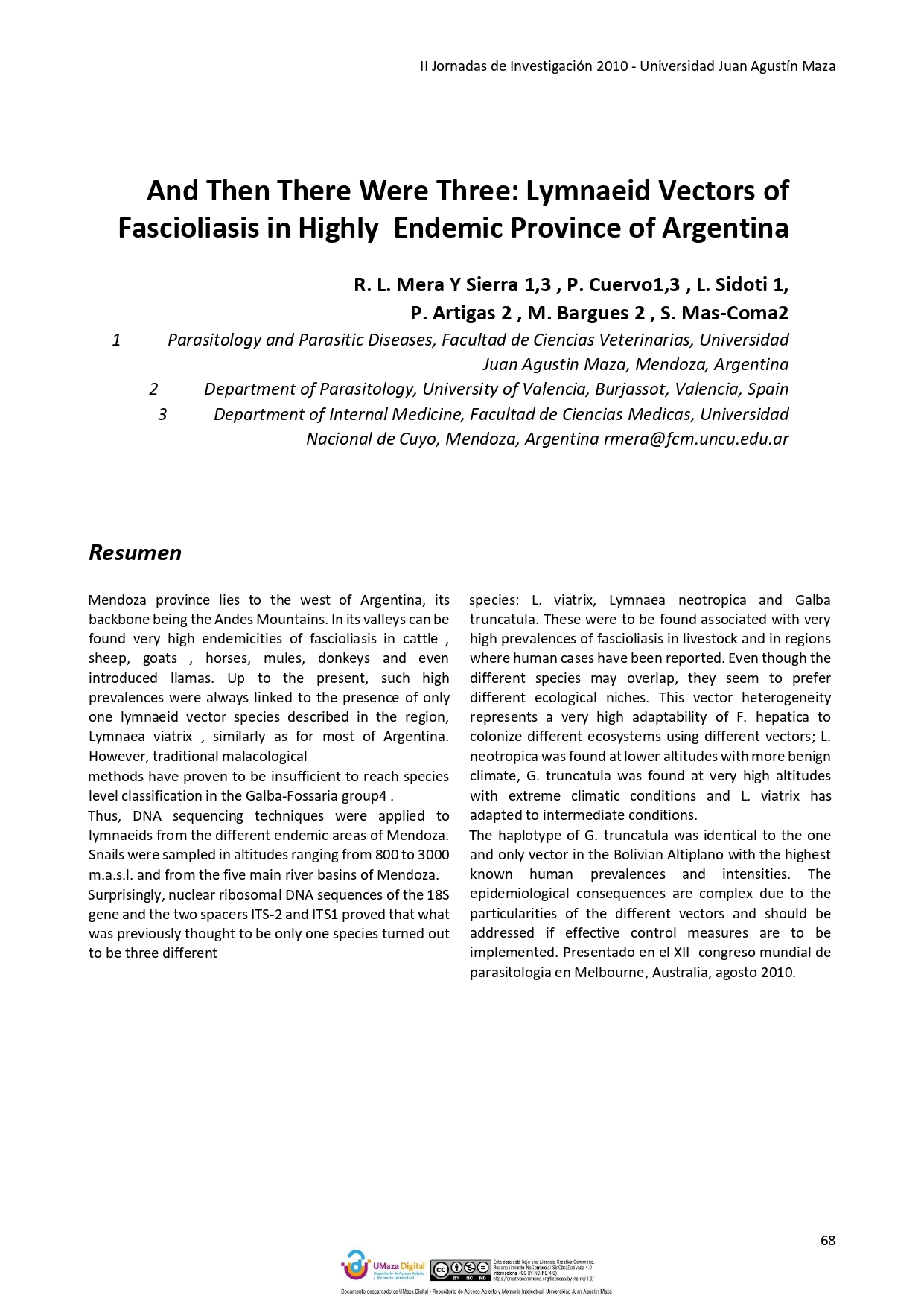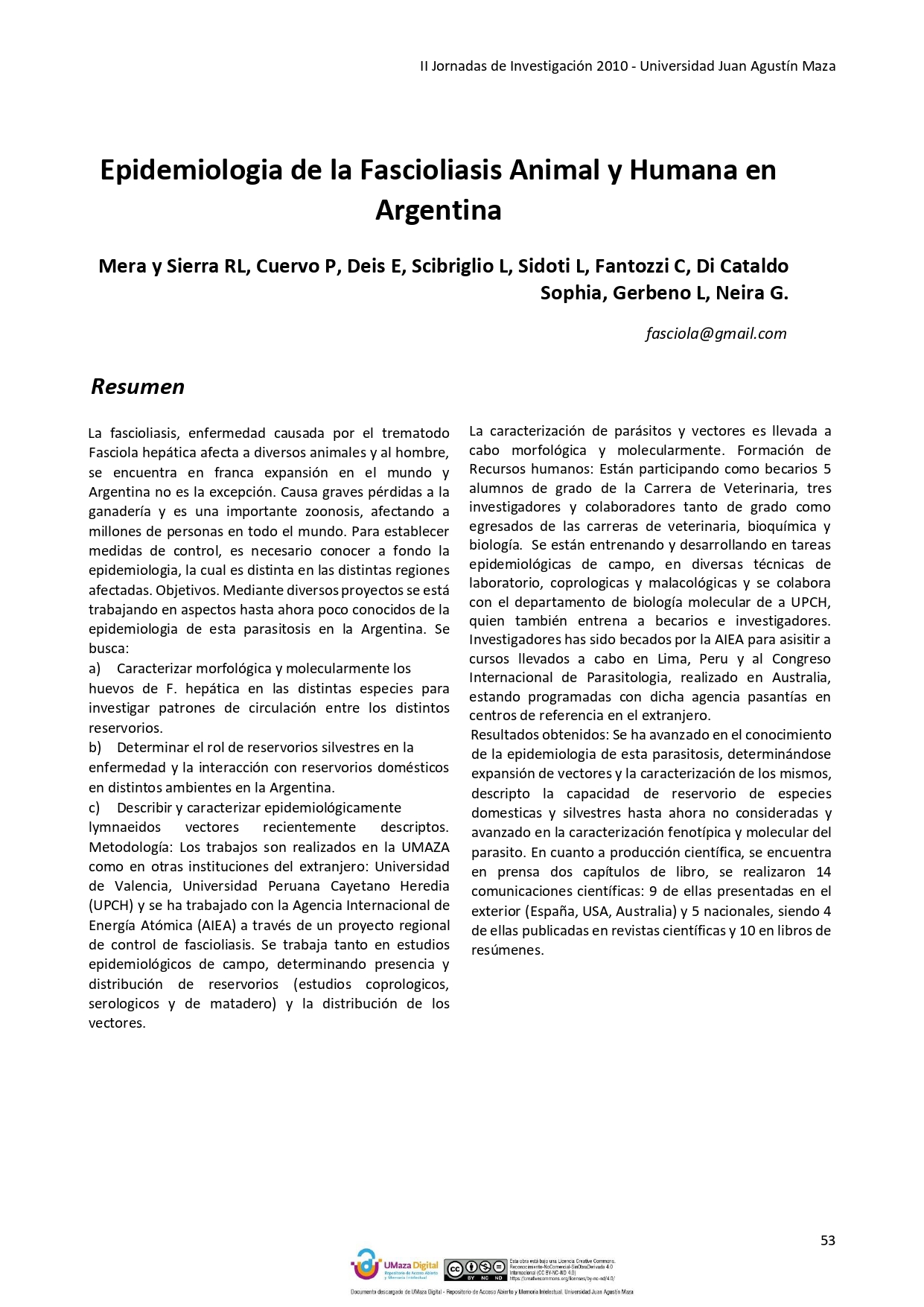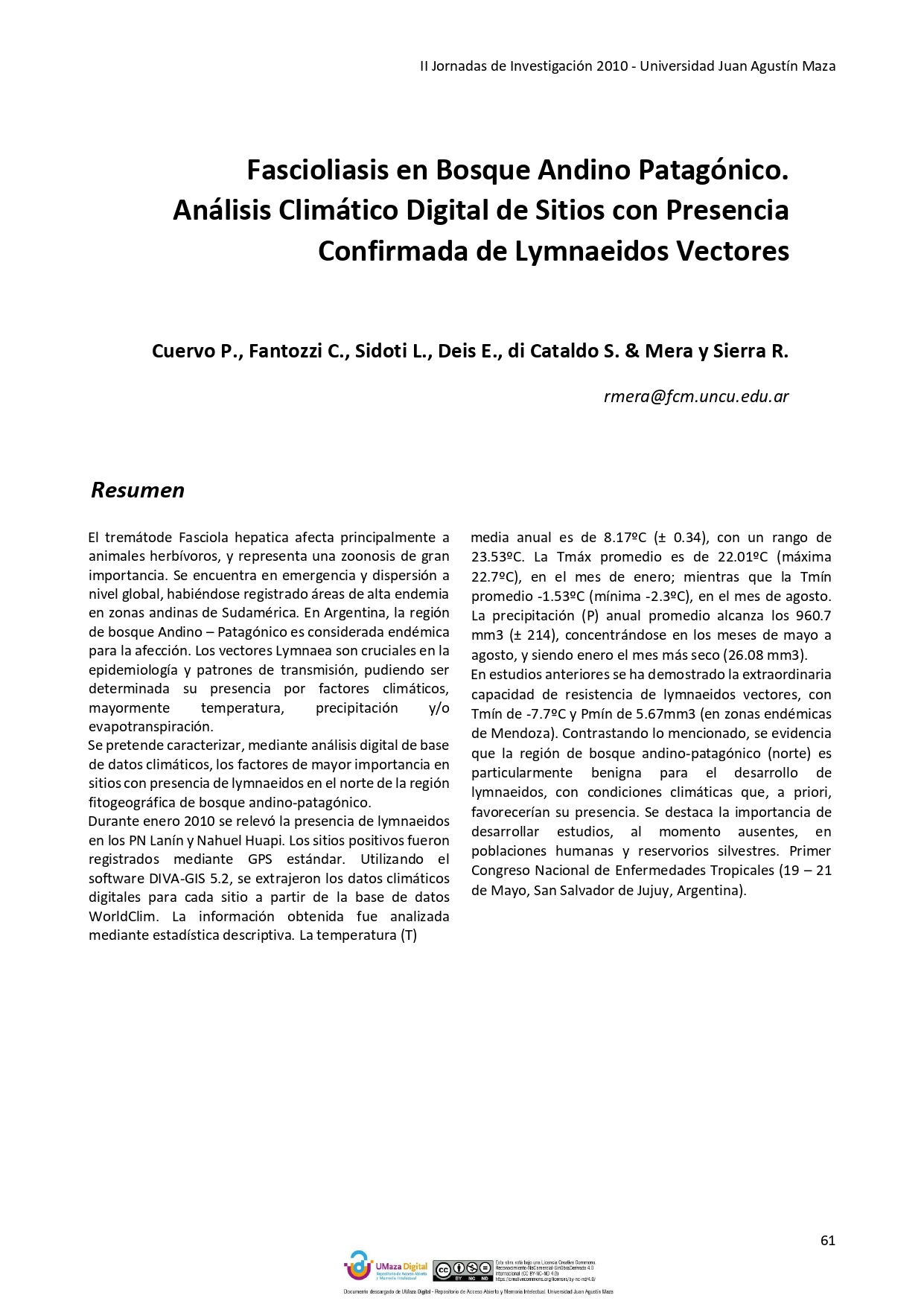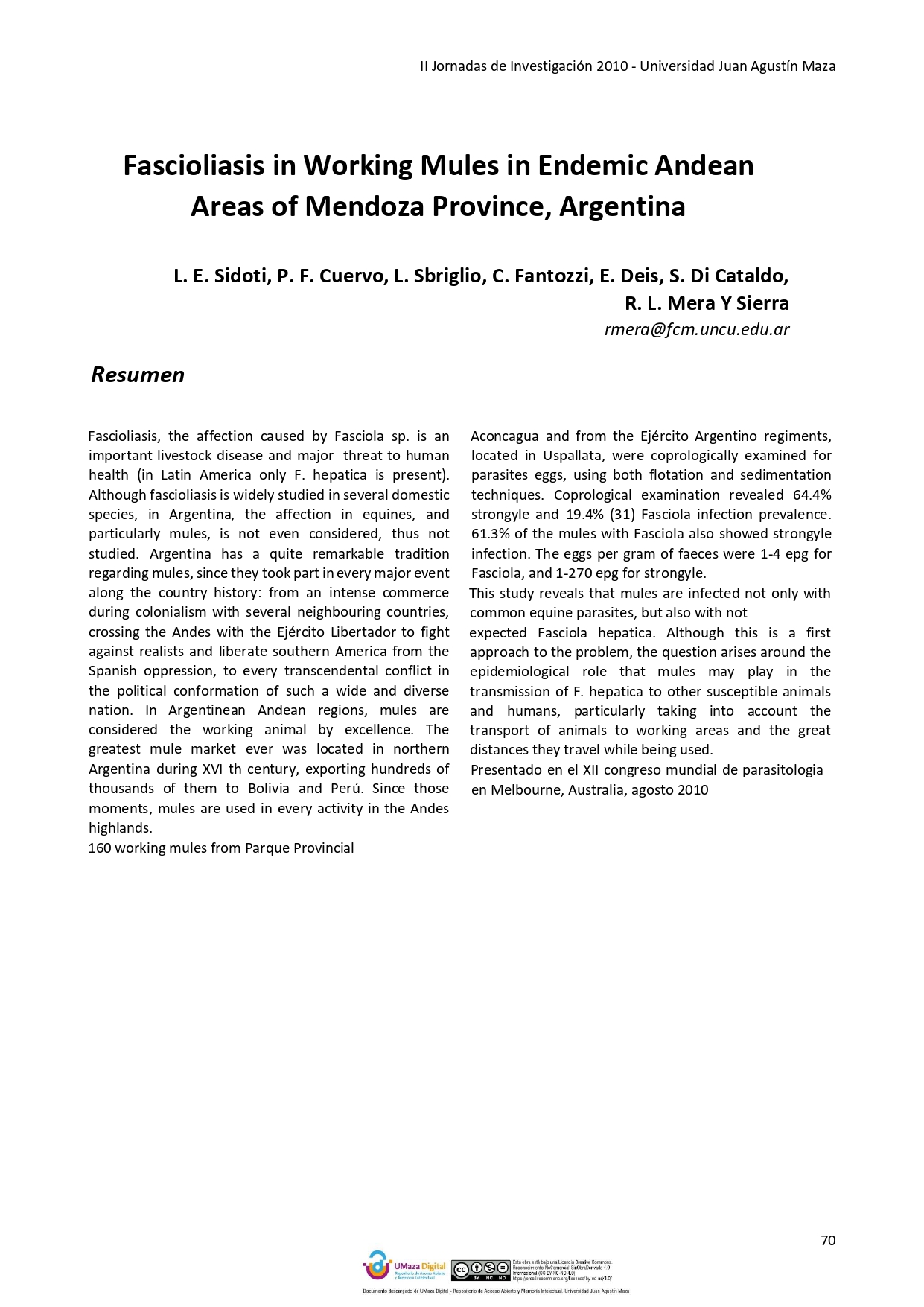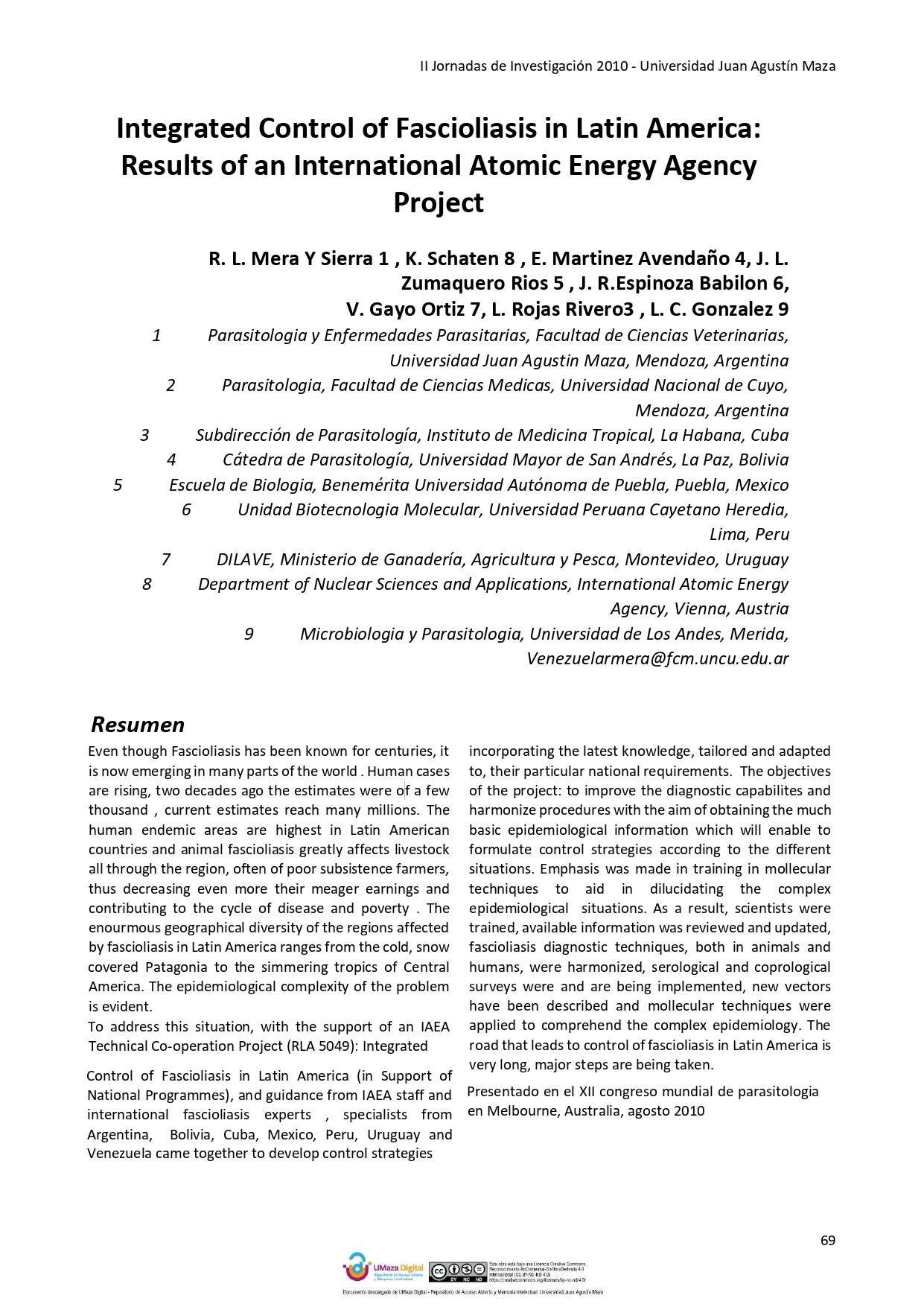Browsing Revista Jornadas de investigación 2010 by Subject "Fascioliasis"
Now showing items 1-5 of 5
-
And Then There Were Three: Lymnaeid Vectors of Fascioliasis in Highly Endemic Province of Argentina
(Editorial UMaza, 2010-10)Mendoza province lies to the west of Argentina, its backbone being the Andes Mountains. In its valleys can be found very high endemicities of fascioliasis in cattle , sheep, goats , horses, mules, donkeys and even introduced llamas. Up to the present, such high prevalences were always linked to the presence of only one lymnaeid vector species described in the region, Lymnaea viatrix , similarly as for most of Argentina. However, traditional malacologicalmethods have proven to be insufficient to reach species level classification in the Galba-Fossaria group4 . -
Epidemiología de la Fascioliasis animal y humana en Argentina
(Editorial UMaza, 2010-10)La fascioliasis, enfermedad causada por el trematodo Fasciola hepática afecta a diversos animales y al hombre, se encuentra en franca expansión en el mundo y Argentina no es la excepción. Causa graves pérdidas a la ganadería y es una importante zoonosis, afectando a millones de personas en todo el mundo. Para establecer medidas de control, es necesario conocer a fondo la epidemiologia, la cual es distinta en las distintas regiones afectadas. Objetivos. Mediante diversos proyectos se está trabajando en aspectos hasta ahora poco conocidos de la epidemiologia de esta parasitosis en la Argentina. -
Fascioliasis en Bosque Andino Patagónico. Análisis climático digital de sitios con presencia confirmada de Lymnaeidos vectores
(Editorial UMaza, 2010-10)El tremátode Fasciola hepatica afecta principalmente a animales herbívoros, y representa una zoonosis de gran importancia. Se encuentra en emergencia y dispersión a nivel global, habiéndose registrado áreas de alta endemia en zonas andinas de Sudamérica. En Argentina, la región de bosque Andino – Patagónico es considerada endémica para la afección. Los vectores Lymnaea son cruciales en la epidemiología y patrones de transmisión, pudiendo ser determinada su presencia por factores climáticos, mayormente temperatura, precipitación y/o evapotranspiración. Se pretende caracterizar, mediante análisis ... -
Fascioliasis in working mules in endemic andean areas of Mendoza Province, Argentina
(Editorial UMaza, 2010-10)Fascioliasis, the affection caused by Fasciola sp. is an important livestock disease and major threat to human health (in Latin America only F. hepatica is present). Although fascioliasis is widely studied in several domestic species, in Argentina, the affection in equines, and particularly mules, is not even considered, thus not studied. Argentina has a quite remarkable tradition regarding mules, since they took part in every major event along the country history: from an intense commerce during colonialism with several neighbouring countries, crossing the Andes with the Ejército Libertador ... -
Integrated control of Fascioliasis in Latin America: Results of an International Atomic Energy Agency Project
(Editorial UMaza, 2010-10)Even though Fascioliasis has been known for centuries, it is now emerging in many parts of the world . Human cases are rising, two decades ago the estimates were of a few thousand , current estimates reach many millions. The human endemic areas are highest in Latin American countries and animal fascioliasis greatly affects livestock all through the region, often of poor subsistence farmers, thus decreasing even more their meager earnings and contributing to the cycle of disease and poverty . The enourmous geographical diversity of the regions affected by fascioliasis in Latin America ranges from ...







